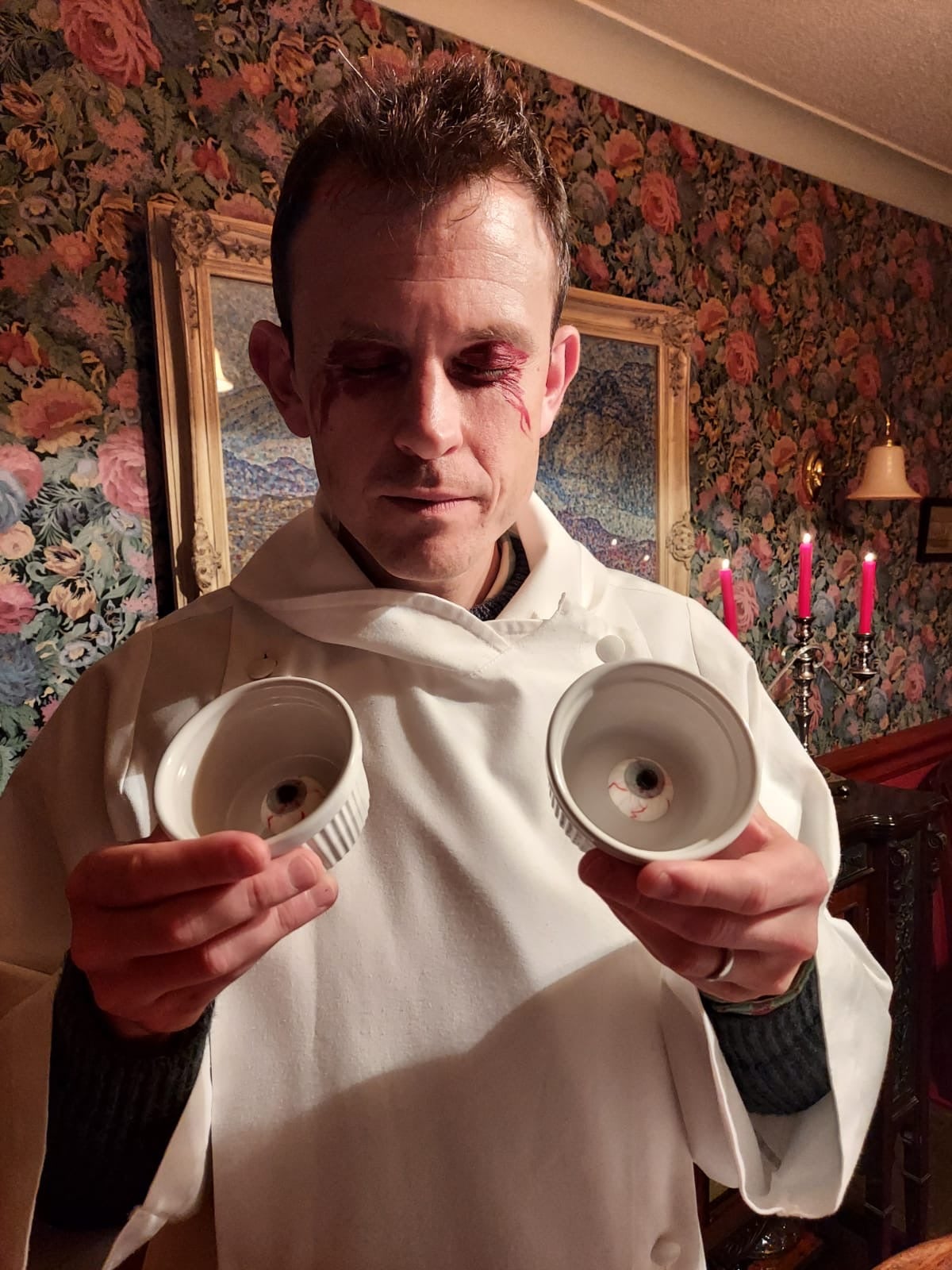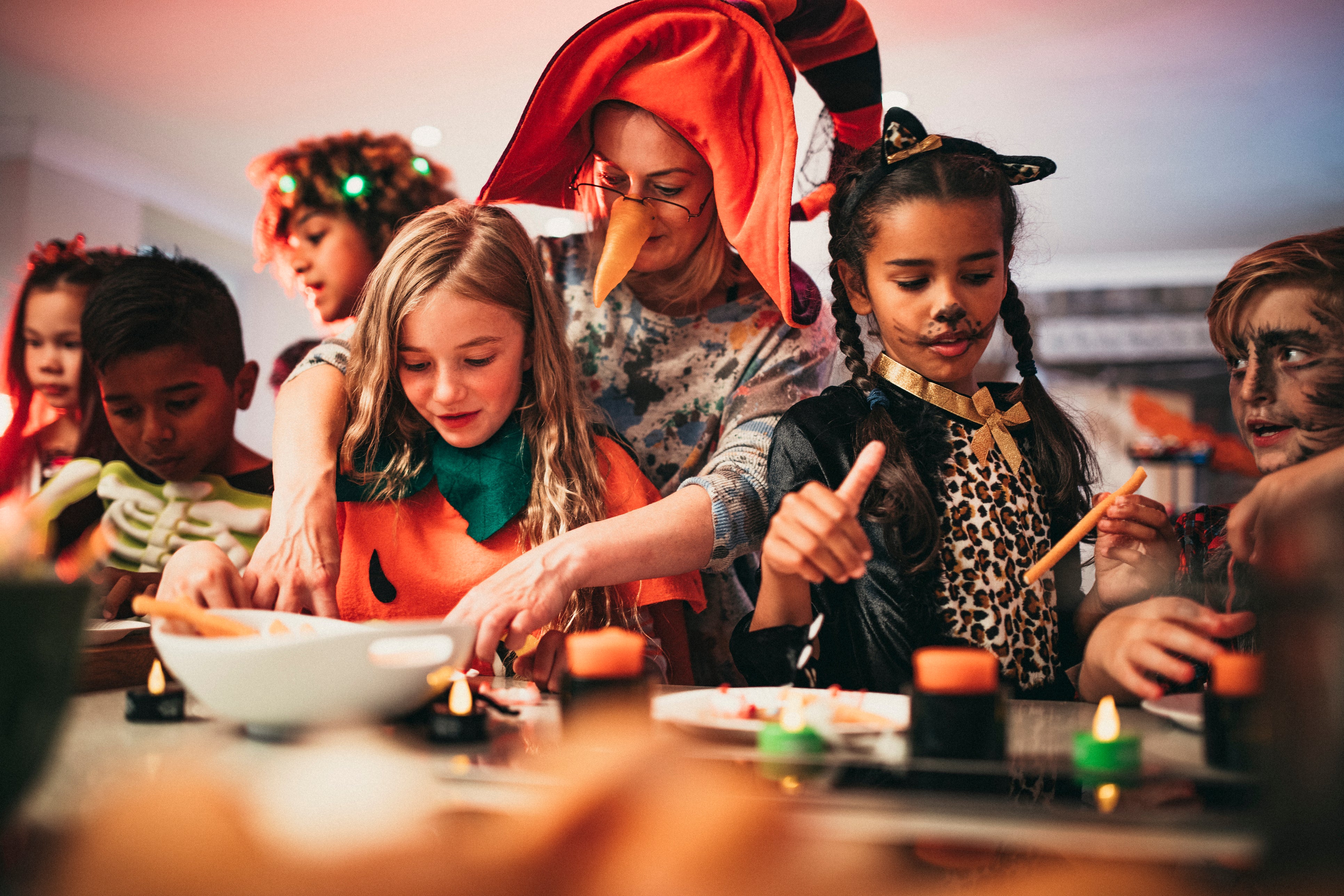Halloween passed me by as a child. Maybe the UK was still on a break from the festival, before it was reimported from the United States. Or perhaps it was just something that “other people” did. Certainly, the notion of trick or treating was very much frowned upon in our house, though I have vague memories of masked children occasionally turning up and being given a biscuit.
When I moved to London in my twenties, I studiously kept the lights off at the front of our flat on Halloween and ignored any knocking at the door. This was partly through embarrassment at never having remembered to buy any treats to hand over to the little kids; and partly for fear that some older tricksters would throw an egg at me and haunt my dreams.
The truth is, I don’t have the chutzpah to front up to unwanted guests on the doorstep, unlike previous generations of my family. My grandmother would recite the Nicene Creed to Jehovah’s Witnesses before they could get a word in edgeways, while my mother once forced some teenage carol singers, who had performed a desultory “We Wish You a Merry Christmas”, to join her in a rendition of “Away in a Manger”.
Halloween is hardly alone among traditional festivals in having fallen victim to rank commercialisation, but it is surely the most egregious example. Back when it was plain old Samhain – a feast to mark the boundary between summer and winter, the living and the dead – druids would bring burning embers from a sacred fire to light the kindling that lay waiting in the hearths of individual homes. They didn’t demand a family pack of Haribo in return.
And when Pope Gregory shifted the Christian feast of All Hallows to 1 November so that Samhain eventually became All Hallows’ Eve, nobody demanded that participants in the celebrations paid £35 for a flimsy zombie outfit off Amazon.

It’s comfortable to blame America for all the noise that now accompanies Halloween. And there is something emblematic about the fact that where our ancient British ancestors carved ghostly faces into the modest turnip, modern Americans alighted on the giant, in-your-face pumpkin. We can conveniently ignore the reality that Halloween traditions were taken by Europeans to the US in the first place.
Then again, British consumerism and the monetisation of all things has only been slightly less rampant over the past 30-odd years than the American version. So, if we want to be fair to the US, let’s lay at least part of the blame for Halloween’s commercial resurgence at the door of Margaret Thatcher. After all, there are plenty around who regard her as the worst witch of all.
But here comes the coda. Since having children of my own, I have realised not only that Halloween can bring joy to small people, it can even be quite a cute occasion. Round our way, the rules are clear: if you’re up for being visited by trick or treaters, leave a pumpkin out; if you don’t want kids dressed as mini-ghouls to knock on your door, leave the treats outside; if you want your own child to be fit for school on the following day, make sure you use easily washable face paints.
Last year, when Covid ruled out trick or treating, my children spent the event as a ghost and a witch’s cat, playing games and eating too many sweets. I even dressed up myself, borrowing an alb from my mother (a priest) and surrounding my closed eyes with red paint. I sat at one end of a table in a candlelit room, telling my children a terrible tale of how my eyeballs had been stolen by birds, before revealing the missing organs in two dishes. Were they scared? Not a bit: they simply ran towards me and nabbed the candy eyes before escaping with appropriate cackles.
This time around, I won’t be putting on an outfit – I’m 42 now, you know. Nor will you find me covering my house in silly-string cobwebs and giant spiders. But there will be a lit pumpkin on the steps and a bowl of sweets on the doorstep. Just watch out for the red ones...





Join our commenting forum
Join thought-provoking conversations, follow other Independent readers and see their replies
0Comments